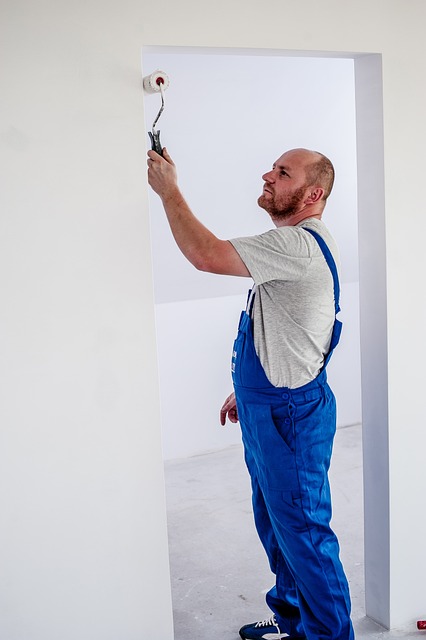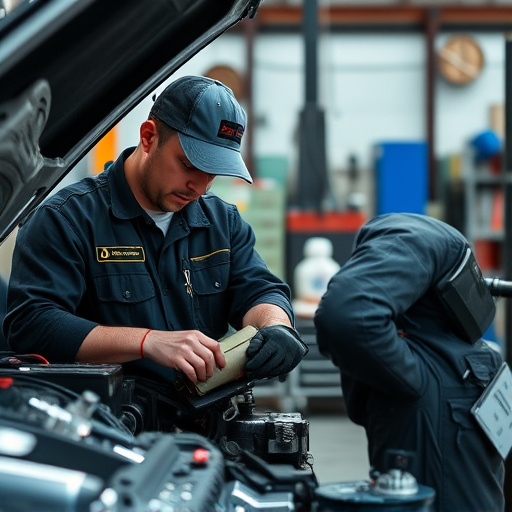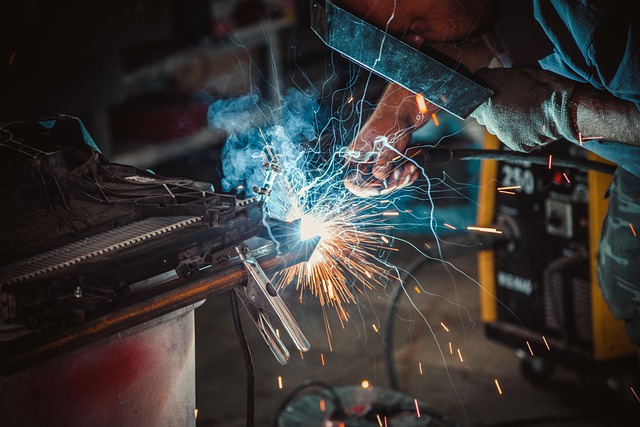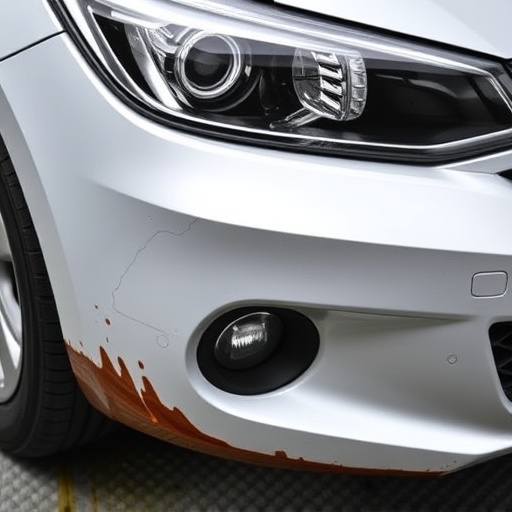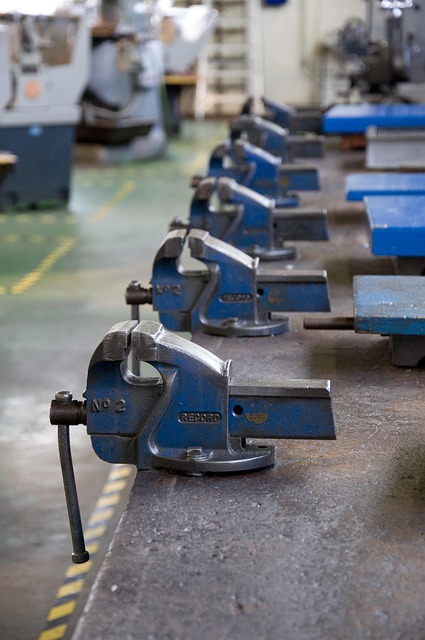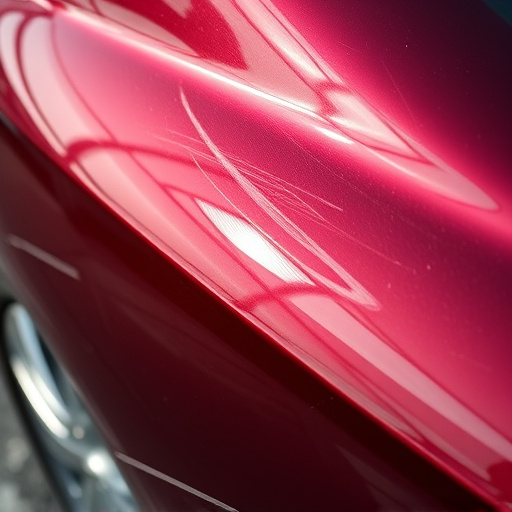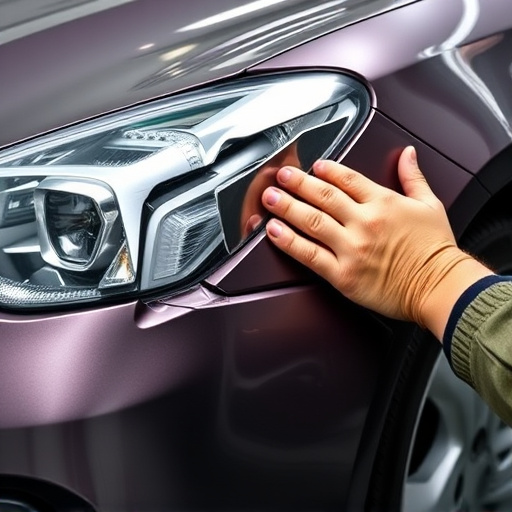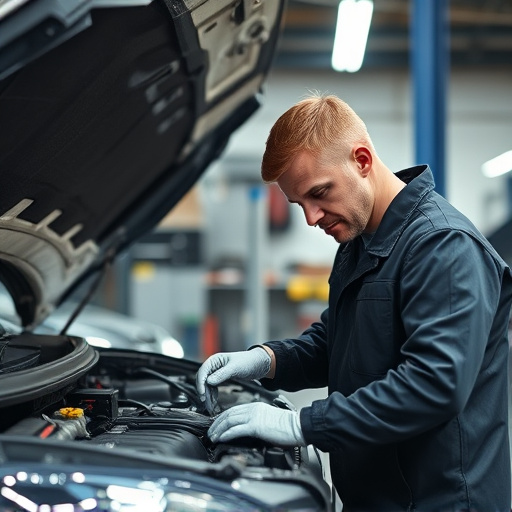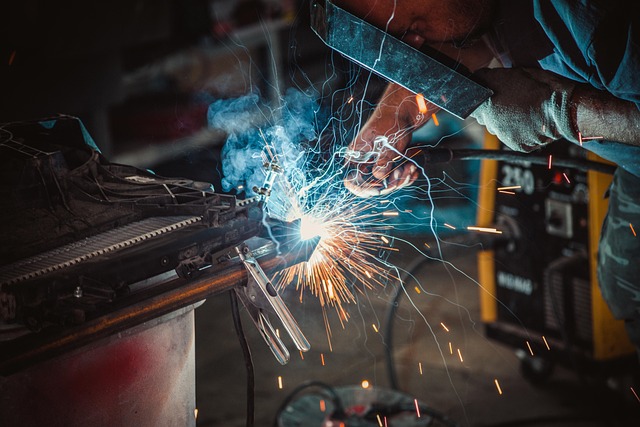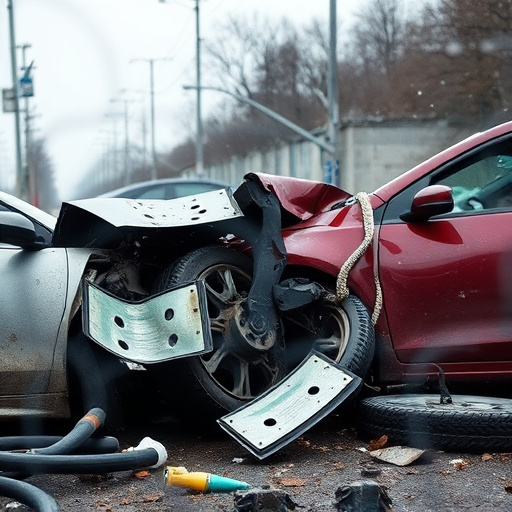Harsh winters create ideal conditions for rust formation on vehicles left exposed, accelerated by salt used for road de-icing. Areas often overlooked like undercarries and wheel wells can suffer significant corrosion leading to structural weaknesses and costly auto collision repairs. Early detection through thorough inspections and proactive rust repair after winter damage are crucial to prevent extensive fixes later.
After a long, harsh winter, many homeowners and vehicle owners discover an unwelcome guest: rust. While it might seem like a minor cosmetic issue, undetected rust can signal more serious structural problems, leading to costly repairs. This article delves into the hidden dangers of winter’s impact on metal surfaces, exploring why prompt action is crucial. We’ll guide you through understanding winter-related rust formation, identifying common hidden spots, and providing effective preventive measures to protect your investments from this insidious problem, ensuring a smooth transition to spring without the financial burden of extensive rust repair after winter damage.
- Understanding Winter's Impact on Metal Surfaces
- – How winter weather contributes to rust formation
- – Common areas where rust can go unnoticed
Understanding Winter's Impact on Metal Surfaces

Winter’s harsh conditions can leave metal surfaces vulnerable to damage, often resulting in rust formation that goes undetected until later. The cold temperatures and moisture present during winter create an ideal environment for rust to develop, especially in areas not properly protected or maintained. Even seemingly well-maintained vehicles can be affected, as salt used for de-icing roads can accelerate corrosion if not promptly removed from car body panels and undercarriage areas.
Many vehicle owners may overlook the potential for winter damage, only noticing the effects when rust repair after winter becomes necessary. Ignoring these issues can lead to more severe problems, requiring extensive car body repair or even a trip to a collision repair shop. Proactive maintenance is key; regularly inspecting and treating metal surfaces before and after winter can prevent costly repairs down the line, ensuring your vehicle’s longevity and preserving its value through proper vehicle body repair techniques.
– How winter weather contributes to rust formation

The harsh winter conditions can be a perfect storm for rust formation on vehicles left outdoors. Snow and ice build-up not only causes visible damage but also creates a moist environment, ideal for corrosion to set in. Salty de-icing chemicals used on roads further accelerate the process by reacting with metal surfaces, leading to accelerated rust repair after winter damage.
During the cold months, metal components, especially uncoated or poorly protected ones, become vulnerable. The freezing and thawing cycles contribute to the problem, as water seeps into cracks and crevices, then freezes, expanding and causing more damage. This process, repeated over several winters, can result in significant structural compromise, necessitating costly auto collision repair or even complete vehicle restoration through detailed auto maintenance practices.
– Common areas where rust can go unnoticed
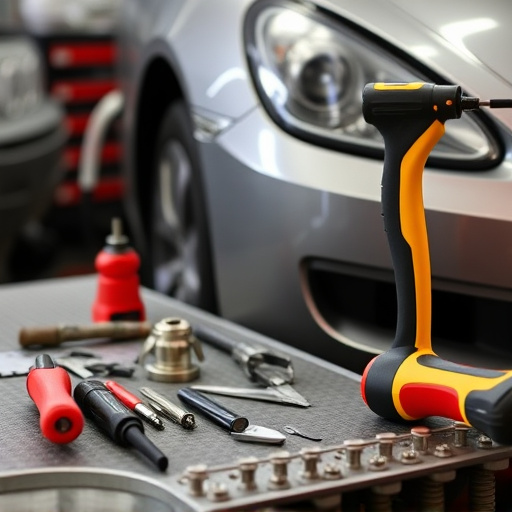
Rust can often go unnoticed in several common areas after a harsh winter. One of the most hidden spots is the undercarriage of vehicles. With snow and ice buildup, moisture gets trapped, leading to corrosion that may not be visible from the surface. Another area to check is the wheel wells, where water and road debris can accumulate, causing rust to form inside these enclosed spaces. The exterior panels and fenders are also vulnerable, especially if there have been any previous dents or damage that could provide entry points for moisture. Even the interior of a vehicle isn’t immune; floor pans and drip rails can suffer from rust, often indicating water leakage issues that need addressing before they turn into costly repairs.
In terms of vehicle collision repair, frame straightening, and auto body restoration, identifying these hidden rust spots is crucial. Ignoring them could result in structural weaknesses and further damage during future accidents or weather events. Early detection allows for prompt rust repair after winter damage, ensuring the integrity of the vehicle’s structure and preventing more extensive (and expensive) fixes down the line.
Undetected rust after winter can lead to costly repairs, as it weakens structural integrity and increases material degradation. By understanding how winter weather contributes to rust formation and identifying common hidden spots where rust may go unnoticed, homeowners can proactively prevent or minimize damage. Regular maintenance and prompt addressing of any signs of rust are key to saving money and ensuring the longevity of metal surfaces. Implement these practices to protect your property from winter damage this season and beyond.
